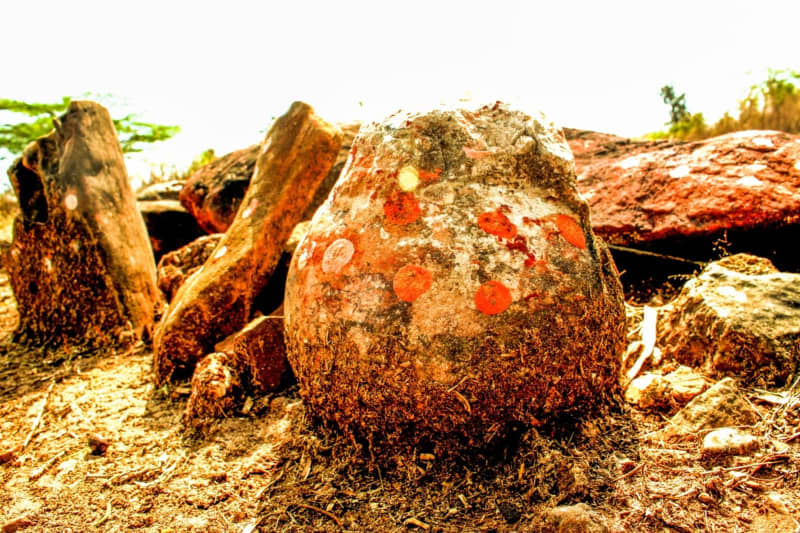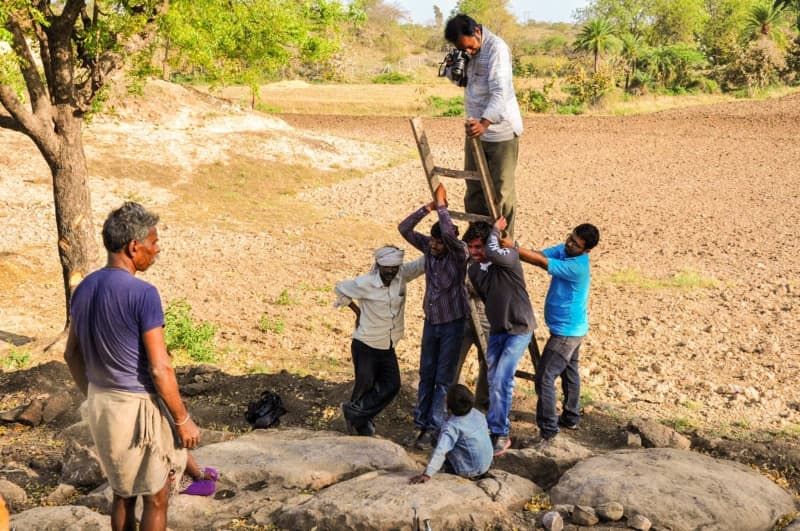Stones worshipped by Indian villagers turn out to be dinosaur eggs

Farmer Vesta Mandloi was surprised to learn recently that one of the "stone balls" his family had been worshipping for generations has turned out to be the fossilised egg of a giant dinosaur that lived in central India's Narmada valley millions of years ago.
Like Mandloi, many farmers of Padlya village in Madhya Pradesh's Dhar district have been worshipping these roughly palm-sized balls known locally as Kankar Bhairav or stone Shiva. The balls lie in small clusters often at the root of a fig tree in an open field and are considered the guardians of the land and livestock.
But after a group of scientists took a closer look, Mandloi found out that the stone he worshipped is in fact the egg of a titanosaur, one of the largest dinosaurs to have existed on earth.
"We were visiting the area in early December to develop a plan for a geological park when we met Mandloi and other farmers," Mahesh Thakkar of the Birbal Sahni Institute of Paleosciences (BSIP) in Lucknow said.
Scientists believe that the dinosaurs were decimated during volcanic activity around 65 million years ago leaving behind a treasure trove of fossil-rich rocks along the valley of the river Narmada, which stretches thousands of kilometres from Madhya Pradesh to Gujarat in the far west.
Large numbers of dinosaur bones, teeth, claws and eggs have been found since the early 19th century and Mandloi's Karkara Bhairav is the latest discovery.
"Many of these fossils still exist because tribal people have been worshipping and taking care of them for time immemorial," said amateur palaeontologist Vishal Verma.
Even though they are referred to as Kankar Bhairava (kankar means stone and Bhairav is another name for the Hindu god Shiva), these stones are not worshipped in the traditional Hindu way with baths of water or milk. "Once a year near Diwali, the villagers make farm animals like cows or goats walk over these stones to gain the protection of the deity," Verma said.
A high school physics teacher, Verma has been an avid fossil hunter and conservationist right from his teenage days spent in this region of rolling hills and ancient volcanic rocks where dinosaurs used to roam 145 million years ago.
In January a group of palaeontologists including Verma reported the finding of 256 eggs of herbivorous titanosaurs in several clusters in Dhar district.
Published in the PLOS One research journal, the study reveals new details about the breeding and nesting habits of the long-necked dinosaurs. The discovery of ovum-in-ovo or multishell eggs and their clustering together indicates that the titanosaurs' breeding habits were similar to those of modern-day birds, according to the report.
Thakkar and his team are helping the Madhya Pradesh government's Ecotourism Department plan a geological park in the area which will include the egg clusters. Verma says he hopes the park will also showcase the ancient traditions of the local people which have helped to preserve the dinosaur eggs.


